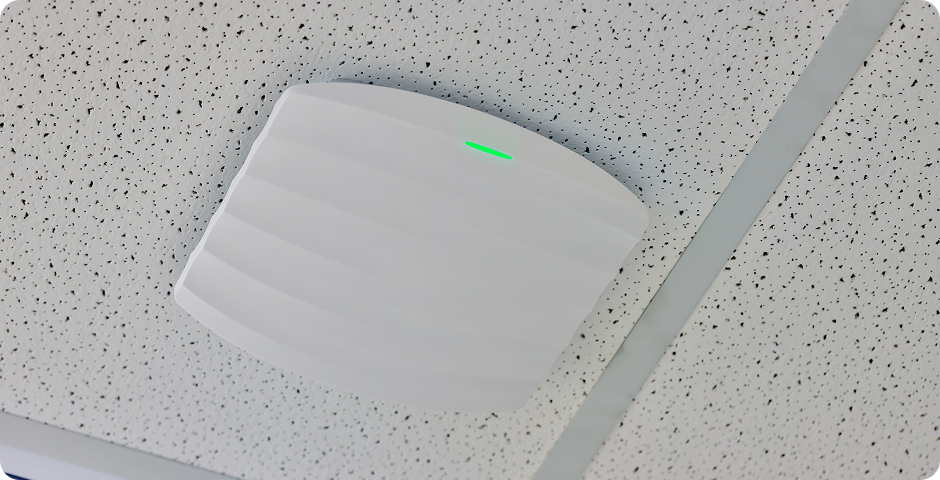What’s the Difference Between Fiber and Traditional Cable Internet?
In today’s always-connected world, fast and reliable internet isn’t just a luxury, it’s a necessity. For business owners especially, it's essential to staying competitive in a $6.8 trillion e-commerce market.
Andrew Bruley-Moore
Network Engineer
Network Engineering
Business Internet

In today’s always-connected world, fast and reliable internet isn’t just a luxury, it’s a necessity. For business owners especially, it's essential to staying competitive in a $6.8 trillion e-commerce market.
With many service options, speeds, and technical terms, choosing the right internet plan for your home or business can feel overwhelming. Understanding the differences between traditional cable internet and fiber internet is the first step toward making a smart, future-ready choice for your business and your customers.
In this article, we’ll explore what the differences are between different types of internet, what you can expect from each, and tips for selecting the best internet option for you.
What Is Traditional Cable Internet?
Cable and fiber are two of the most common types of broadband internet. They both offer wireless access, but how they transmit and receive information differs. Traditional cable internet uses coaxial cables (like those used for cable television) to transmit data via electrical signals. Inside the coax cable is a copper core coated with aluminum, a copper shield, and a plastic coating.
Traditional internet cables are usually buried to avoid damage to the cables, but the cables can be accidentally cut, and are more susceptible to extreme temperatures than fiber-optic cables are.
You can expect decent browsing speeds from traditional cable internet. Often, you will see download speeds between 100-1000 Mbps with upload speeds significantly slower than download speeds. One of the biggest drawbacks of traditional cable internet is that you share your bandwidth with your neighbors, meaning the network runs slower if more people are trying to connect.
What Is Fiber Internet?
Fiber internet uses fiber-optic cables made of small, flexible glass strands. Data travels through these cables as light, which enables much faster speeds and efficiency. Light travels faster and more reliably over distances, and carries more data than traditional copper internet cables.
One of the key benefits of fiber-optic internet over cable internet is faster speeds. Fiber can net speeds from 250 Mbps up to 1 Gbps or more, for both uploads and downloads, depending on your plan. For example, it would take you less than 10 seconds to download a two-hour movie with a fiber internet connection, compared to 20 minutes with traditional cable internet download speeds.
Key Differences Between Broadband and Fiber
Fiber internet generally offers higher security, faster upload and download speeds, and better reliability than traditional cable internet or DSL. Since fiber isn’t as sensitive to temperatures, weather, and electromagnetic interference as cable, you get more consistent, reliable service.
Leading fiber internet providers (like FirstDigital) provide symmetrical speeds, which means download and upload speeds are similar, which is useful for businesses who need to send and receive large files from clients. Symmetrical speeds also make for crisper video calls, efficient remote work, and lag-free streaming.
Which Internet Option Is Best for Your Business?
Fiber internet is becoming more popular, and fiber networks are expanding all the time. FirstDigital, for example, now owns and operates the largest privately owned fiber network in the Intermountain West, with over 2,000 fiber miles. However, availability remains the biggest challenge for many prospective fiber users.
The Federal Communications Commission (FCC) estimates that 95% of the United States can access cable internet coverage at speeds of 100 Mbps download and 20 Mbps upload (100/20) or more. Recent studies with the Fiber Broadband Association have shown that just over fifty percent (56.5%) of the United States has access to fiber internet at 1000 Mbps or more. That means if you live in a rural area, you’re likely to have more cable internet options than fiber.
If you live in an area where fiber is available, and you rely on fast, secure internet access to do the bulk of your business, fiber is likely the superior choice for you. If you live in an area where fiber options are limited, or you don’t need ultrafast upload and download speeds to do your work, a higher tier of cable internet service may suit your needs just fine.
Future-Proof Your Business with Fiber
Even if you think you don’t need the speed and reliability benefits of fiber at this time, fiber is a great choice for future-proofing your business. Every year, American society becomes more and more reliant on high-speed internet and streaming, and businesses will need to adapt to keep up. Even the slightest drop in speeds and reliability can cause you to lose business, so choosing the right connection is critical for your future success and market share.
Ready to upgrade your business internet for unparalleled speeds and 99.999% uptime? Let FirstDigital design your custom fiber network so you can reach your biggest business goals faster.
Heading 1
Heading 2
Heading 3
Heading 4
Heading 5
Heading 6
Lorem ipsum dolor sit amet, consectetur adipiscing elit, sed do eiusmod tempor incididunt ut labore et dolore magna aliqua. Ut enim ad minim veniam, quis nostrud exercitation ullamco laboris nisi ut aliquip ex ea commodo consequat. Duis aute irure dolor in reprehenderit in voluptate velit esse cillum dolore eu fugiat nulla pariatur.

Block quote
Ordered list
- Item 1
- Item 2
- Item 3
Unordered list
- Item A
- Item B
- Item C
Bold text
Emphasis
Superscript




